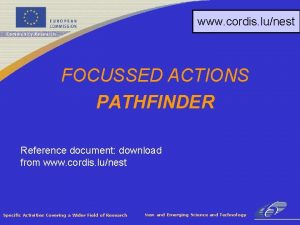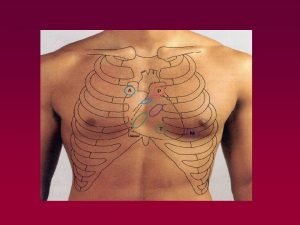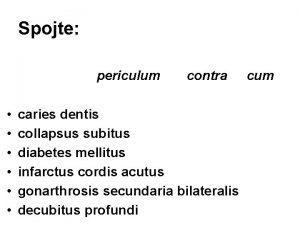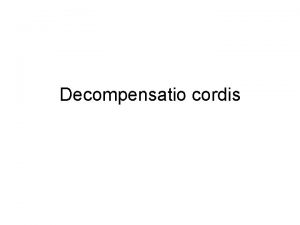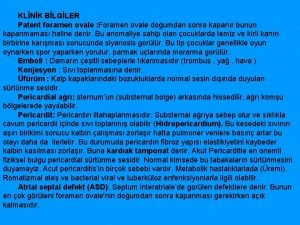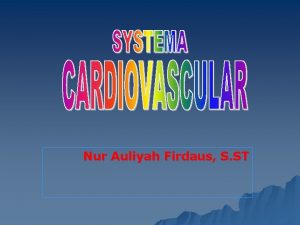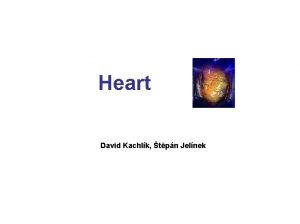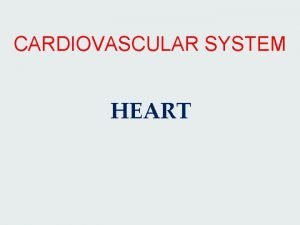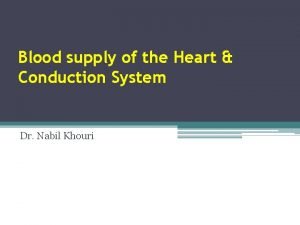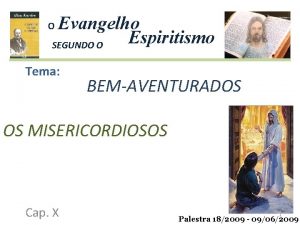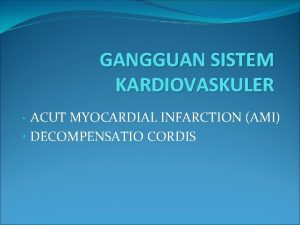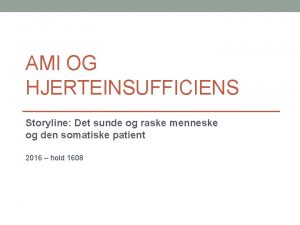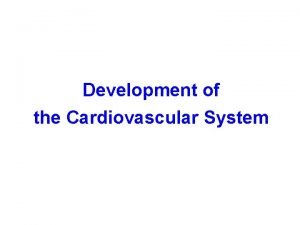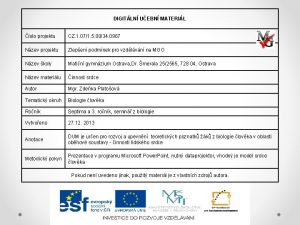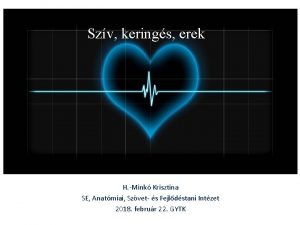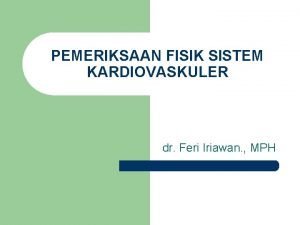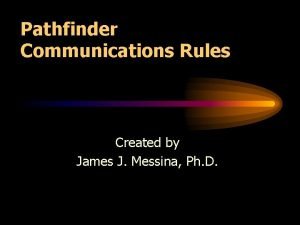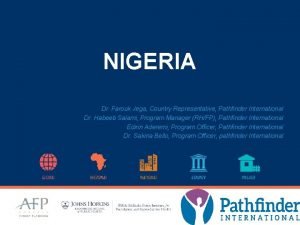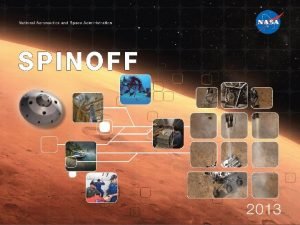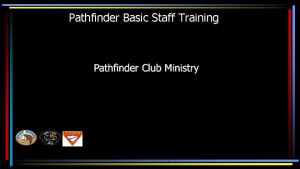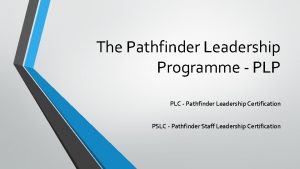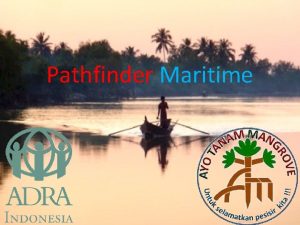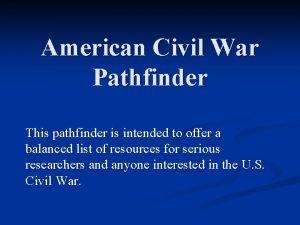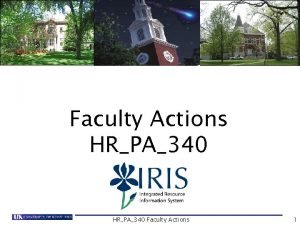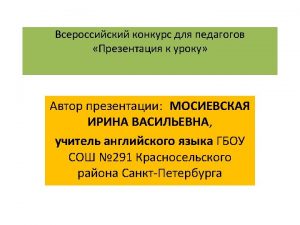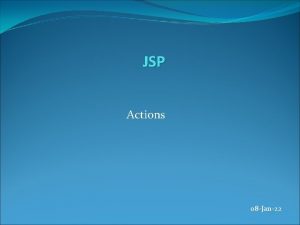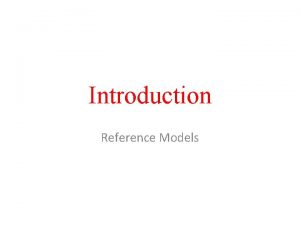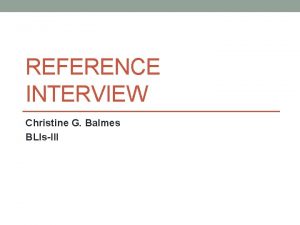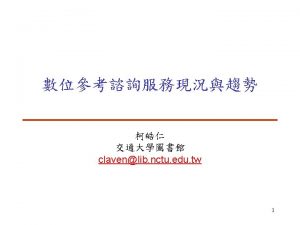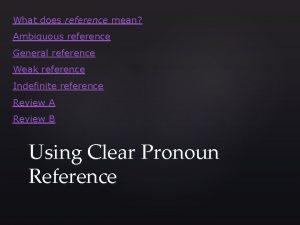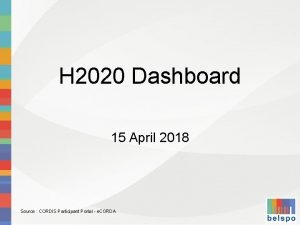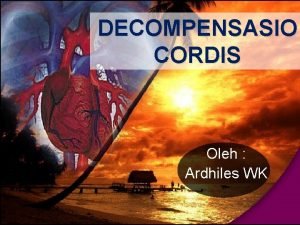www cordis lunest FOCUSSED ACTIONS PATHFINDER Reference document

































- Slides: 33

www. cordis. lu/nest FOCUSSED ACTIONS PATHFINDER Reference document: download from www. cordis. lu/nest Specific Activities Covering a Wider Field of Research New and Emerging Science and Technology

NEST work programme December 2003 • Open call (ADVENTURE, INSIGHT, Support) continued – indicative budget € 30 m – call deadlines 14 April, 15 September 2004 • First PATHFINDER call launched – topics “Tackling complexity in science”; “Synthetic biology”; “What it means to be human” – indicative budget € 35 m – call deadline 14 April 2004 Specific Activities Covering a Wider Field of Research New and Emerging Science and Technology

Outline of Presentation • General aspects of PATHFINDER • Initiatives for 2004: – Tackling complexity in science – Synthetic biology – What it means to be human • Practical aspects • Further information Specific Activities Covering a Wider Field of Research New and Emerging Science and Technology

PATHFINDER: Mandate “support research on specific topics that are identified during the course of implementation of FP 6 on the basis of their urgency and potential for future societal, industrial or economic relevance. ” Specific Activities Covering a Wider Field of Research New and Emerging Science and Technology

PATHFINDER topics Identification/Selection • Ideas must come “bottom-up” from the science base • Open forum for ideas may be useful (ADVENTURE + INSIGHT proposals, NEST “ideas in-box”) • A “Structured dialogue” with the research community is required to make choices: – Search strategy within the science and technology “space” – Interaction with the research community structured over time to move from global assessment to specific choices • First year of NEST provides a “piloting” exercise Specific Activities Covering a Wider Field of Research New and Emerging Science and Technology

PATHFINDER topics “Structured dialogue” 1. Definition of search strategy: – Areas of research where cross-disciplinary transfers of technique are creating new opportunities – Outside the frame of thematic priorities 2. Identification of candidate areas, on basis of research literature, foresight and other strategic analysis, plus open invitations for ideas 3. Iterative process of testing and refining choices: – Targeted workshops with external experts to explore candidate areas – Internal consultation with thematic priorities – High level consultation with EURAB, programme committee Specific Activities Covering a Wider Field of Research New and Emerging Science and Technology

Pathfinder topics 2004 • Tackling complexity in science – Explore inter-disciplinary approaches and techniques to deal with complex problems in diverse areas of science • Synthetic biology – Develop engineering, device-oriented approaches to working with sub-cellular building blocks • What it means to be human – Towards an integrated understanding of the human mind, by uniting diverse but relevant disciplines Specific Activities Covering a Wider Field of Research New and Emerging Science and Technology

PATHFINDER: Implementation • Build and consolidate European capabilities in promising emerging (interdisciplinary) areas with high future potential for Europe in the long term. • Provide “early stage funding”: as ideas mature they should be translated into more conventional funding modes • Up to 10 Mio. EUR or more per topic (for several STREPS + one or more CAs) • Annual calls for proposals; several topics per call • First call 17 December 2003, closure 14 April 2004 Specific Activities Covering a Wider Field of Research New and Emerging Science and Technology

STREP projects • Each PATHFINDER initiative/topic will be composed of several STREP projects submitted individually (not as clusters) • Proposals have to be submitted as FULL proposals (one stage evaluation process not two stages as in NEST-OPEN) • Proposers need to choose clearly one PATHFINDER initiative/topic they are addressing • Proposals will be evaluated and selected on their individual merits • Projects funded within a PATHFINDER initiative will be expected to develop a degree of interaction, exchange and cooperation • Project size expected to be in the 1 -1. 5 Mio. EUR range; 4 - 6 partners Specific Activities Covering a Wider Field of Research New and Emerging Science and Technology

Coordination Actions • Expect to fund one (exceptionally more) co-ordination action for each PATHFINDER initiative/topic • Co-ordination actions will be evaluated and selected at the same time as the STREP proposals • Role of co-ordination depends on topic • An added task will be to provide a means and venue of interaction for the chosen projects • Funding expected to be in the 0. 5 to 1 MEuro range; 15 – 25 partners Specific Activities Covering a Wider Field of Research New and Emerging Science and Technology

PATHFINDER initiative on: Tackling complexity in science Specific Activities Covering a Wider Field of Research New and Emerging Science and Technology

Background / motivation • Complexity is a critical challenge towards progress in many areas of Science (e. g. biology, cognitive science) • Increasing need to understand behaviour of ever more complicated man made systems (e. g. electrical grid) – Technological Systems • Same is true of natural phenomena such as weather, geology, etc – Natural Systems • Also true of understanding human networks (social, political, enterprise, etc) – Social Systems • Common approach and techniques emerging to dealing with complex problems in science and technology Specific Activities Covering a Wider Field of Research New and Emerging Science and Technology

Objectives of initiative • Bring together high level groups in Complex Systems Science and others in specific disciplines to tackle important problems where complexity is a key issue • Extend and generalise techniques used in one area to other areas of science • Help structure and co-ordinate the complexity field in Europe Specific Activities Covering a Wider Field of Research New and Emerging Science and Technology

Emphasis and approach • Use of tools and techniques of complex systems science such as: – Representing complex systems as networks, and networks of networks, etc – “Emergence”: key characteristic of complex systems – Predictability and extreme events • Transfer or extension of successful techniques from one area of science to another • Projects should take a practical problem solving approach, grounded in (experimental, real) data Specific Activities Covering a Wider Field of Research New and Emerging Science and Technology

Some examples topics • Biology – Bio-complexity – Cellular signalling and regulation processes • Social Sciences – Emergence and robustness of social institutions • Environmental Sciences – Predictability and distribution of extreme events in natures (earthquakes, floods, weather, ecology) • Particularly interested in projects that help bridge gap between physical sciences, and social and other natural sciences Specific Activities Covering a Wider Field of Research New and Emerging Science and Technology

Possible Co-ordination Action • Link together the PATHFINDER projects in the initiative • Link the projects to the surrounding complexity community (eg information / data exchange) • Bring together the community at large Specific Activities Covering a Wider Field of Research New and Emerging Science and Technology

Examples of topics not included • Research of a purely theoretical nature • ICT – IT related research (FET initiative) • Purely industrial or engineering nature • Financial research not related to social sciences (eg. Stock market analysis) • Research of limited interdisciplinary nature • Proposals whose primary focus lies in one of the other Pathfinder Initiatives • Research in Thematic Priorities Specific Activities Covering a Wider Field of Research New and Emerging Science and Technology

NEST PATHFINDER initiative on Synthetic biology Specific Activities Covering a Wider Field of Research New and Emerging Science and Technology

Technologies based on biological principles • From systems biology to engineering systems, i. e. engineering systems made from biological “building blocks” (functional proteins, sub-cellular machinery, organisms) • Pervasive throughout industry (materials synthesis, energy production, bio-remediation, lubrication, monitoring and sensing, drug delivery…) • Versatile and “intelligent” - combining different functions, changing parameters according to local conditions • Industrial fabrication of systems “to order”, based on standard components and interfaces Specific Activities Covering a Wider Field of Research New and Emerging Science and Technology

Main elements of projects • Engineered functional building blocks: sub-cellular “modules”, • • • biosynthetic pathways, molecular machinery, signalling pathways, transport mechanisms, etc. Interfaces and components: input-output processes, hierarchical interactions between subcellular building blocks Working platforms: “optimized” organisms for synthetic biology applications or non-living carrier systems for biology-based engineering. Control, regulatory, and communication systems: genetic regulatory circuits, feedback mechanisms within individual components and modules, communication methods. Safety and security technologies: incl. containment technologies Design tools: computational analysis, methods for functional protein design, systems modelling, etc. Production methods: programmable high throughput DNA/protein production Specific Activities Covering a Wider Field of Research New and Emerging Science and Technology

Requirements for projects • Stimulate cross disciplinary research to demonstrate key principles and generate tools, building blocks and generic “platform technologies” for synthetic biology • Projects should focus on design and engineering of new biologybased systems with substantially different characteristics from natural systems • They can address different biological processes (genetic circuits, metabolic pathways, signal transduction) and components • They should have clear applications in mind • They should aim for tangible outcomes, demonstrating engineering control over biological processes, or “platform technologies”. • Enable better communication between teams working in relevant/related areas and “connectivity” with work around the New and Emerging Science and Technology Specific Activitiesworld Covering a Wider Field of Research

Examples of topics not included • Research related to Artificial Life. • Research whose main focus is computational or biomimetic chemistry or other areas of basic science. • Research on functional genomics and proteomics, single -component genetic engineering and classical biotechnology. • Research on structural biology and systems biology mainly aimed at the generation of basic knowledge. • Research on tissue engineering. • Research on artificial organs and bionics implants. Specific Activities Covering a Wider Field of Research New and Emerging Science and Technology

NEST PATHFINDER initiative on What it means to be human Specific Activities Covering a Wider Field of Research New and Emerging Science and Technology

Overall objectives • This initiative aims to investigate why humans are different: – What features make our cognitive abilities unique? – What are the origins of these features? • Why this question? Because: – Today, a more integrated understanding of the human mind/brain and its specific features should allow to open up new scientific opportunities – It provides a way to bring together cognitive sciences and related disciplinary areas that can all contribute to explore the opportunities at the interface Specific Activities Covering a Wider Field of Research New and Emerging Science and Technology

Scientific objectives • Projects may have different individual objectives. However, they must address “what features make human cognitive abilities unique, and what are the origins of these features? ” • focus on higher cognitive faculties, (thinking, reasoning, using language) and individual cognitive development (in the context of social and cultural factors) • take a comparative and evolutionary perspective • be highly interdisciplinary • In all cases however, the research must address the key question: why are humans different? Specific Activities Covering a Wider Field of Research New and Emerging Science and Technology

What should projects look like? • NEST is looking for multi-disciplinary proposals that bring together scientists from different disciplines ranging from anthropology, biology, genetics, linguistics, neuroscience to psychology to combine the scientific expertise from across Europe • The proposers themselves are free to determine what precise objectives their projects have. However theses objectives must provide real insight into the question “Why are we what we are? ” Specific Activities Covering a Wider Field of Research New and Emerging Science and Technology

Examples of topics not included • Research on brain or mental disorders within a medical perspective (prevention/diagnosis/therapeutics). • Research on artificial life, artificial intelligence, neuroinformatics and cognitive systems more generally. • Development of new infrastructure or major equipment and facilities for investigation; • Research which could be carried out under thematic priorities of the 6 th framework programme; • Research which is mono-disciplinary, or where there is no substantial interdisciplinary dialogue across conceptual boundaries. Specific Activities Covering a Wider Field of Research New and Emerging Science and Technology

PATHFINDER Practical Aspects and Frequently Asked Questions Specific Activities Covering a Wider Field of Research New and Emerging Science and Technology

Pathfinder Reference documents • Reference documents available on NEST Web Site for each topic • Generated following iterative consultations with experts • Provide further practical guidance to proposers in terms of the scope, objectives, partnerships, etc • Proposers are strongly encouraged to consult and read over the documents prior to preparing proposals Specific Activities Covering a Wider Field of Research New and Emerging Science and Technology

Pre-proposal check service • Pre-proposal check service available up to 3 weeks prior to the deadline (that is: 24 March 2004) • Pre-proposal Forms: Guide for Proposers • Requested: project summary + partnership • Before submitting, ideas and partnership should be pretty clear and stable • NEST will give guidance regarding suitability of scope and eligibility, based on information submitted • Responses from the EC are simply for guidance and do not commit the Commission either way • Final decision on proposals made by external expert evaluators • Not a discussion forum! • Pre-proposals (PATHFINDER) and OUTLINE Proposals (ADVENTURE, INSIGHT) are something different Specific Activities Covering a Wider Field of Research New and Emerging Science and Technology

Evaluation • Evaluation will be performed first by sending proposals to remote referees for detailed technical evaluation • Following that, a Panel with wide ranging expertise will be brought together to choose the most outstanding proposals, and that form a complementary set • Evaluation expected to take place in June 2004, and initial results available before the end of July • Expert referees on these topics always needed / welcome (include NEST activity code) (http: //www. cordis. lu/experts/fp 6_candidature. htm) Specific Activities Covering a Wider Field of Research New and Emerging Science and Technology

Further practical information http: //www. cordis. lu/nest/home. html – Call text (FP 6 -2003 -NEST-Path ) – NEST Work Programme 2003 – Guide for proposers for Pathfinder (STREP or CA) – Reference documents by topic – National Contact Points Specific Activities Covering a Wider Field of Research New and Emerging Science and Technology

NEST-PATHFINDER Information and Brokerage Event, Brussels, 2 nd March 2004 • • • Overall Information on Pathfinder Parallel sessions on each topic Chance to meet potential partners Jointly organised with NCPs Full information at: http: //www. eurosfaire. prd. fr/nest/NEST-event. March Specific Activities Covering a Wider Field of Research New and Emerging Science and Technology
 Pathfinder reference
Pathfinder reference Document cookie set
Document cookie set Reference node and non reference node
Reference node and non reference node Reference node and non reference node
Reference node and non reference node Fibroserous
Fibroserous Decompensatio cordis
Decompensatio cordis Septum cordis
Septum cordis Infarctus cordis recens
Infarctus cordis recens Decomp cordis
Decomp cordis Vagina serosum arteriosum
Vagina serosum arteriosum Ictus cordis
Ictus cordis Declinazione eques equitis
Declinazione eques equitis Sinus venarum cavarum atrii dextri
Sinus venarum cavarum atrii dextri Ventriculus cordis
Ventriculus cordis Circulus coronarius
Circulus coronarius Atrioventricular groove
Atrioventricular groove Cor terletak pada cavum
Cor terletak pada cavum Misere cordis
Misere cordis Decompensatio cordis
Decompensatio cordis Ateroomaplakki
Ateroomaplakki Ascendens descendens
Ascendens descendens Venstresidig hjerteinsufficiens
Venstresidig hjerteinsufficiens Cor
Cor Primary interventricular foramen
Primary interventricular foramen Převodní systém srdeční
Převodní systém srdeční Szív hallgatózási pontok
Szív hallgatózási pontok Iktus kordis
Iktus kordis Aphasia pathfinder
Aphasia pathfinder James messina phd
James messina phd Legalism
Legalism Pathfinder curriculum
Pathfinder curriculum Wtp allows for
Wtp allows for Pathfinder international nigeria
Pathfinder international nigeria Alertness pathfinder
Alertness pathfinder
